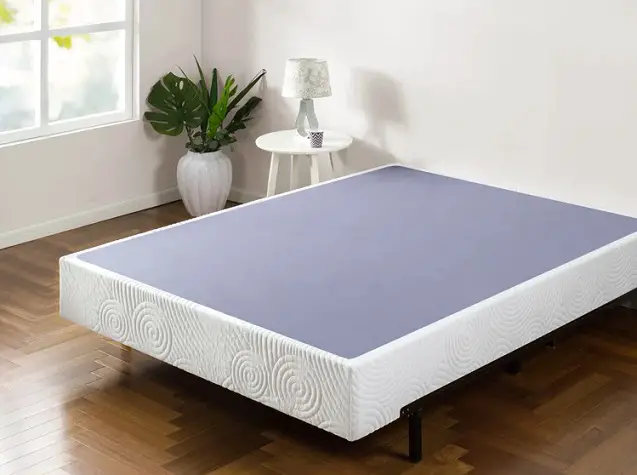I never thought I would find myself in a situation where I needed to raise and lower a trundle bed, but life has a funny way of throwing unexpected challenges our way.
So there I was, staring at this seemingly complex contraption, wondering if I would ever figure out how to make it work. Little did I know, that with a few simple steps and a friendly attitude, raising and lowering your trundle bed can be made incredibly simple.
Let me share with you my newfound knowledge and make your life a whole lot easier.
Table of Contents
Understanding Trundle Beds
What is a trundle bed?
A trundle bed is a practical and versatile piece of furniture that consists of two beds stacked on top of each other. The top bed is the main bed, while the lower bed, known as the trundle, is on wheels and can be easily pulled out when needed.
Trundle beds are commonly used in small spaces or guest rooms, providing an extra sleeping option without taking up much space.
Benefits of using a trundle bed
Using a trundle bed comes with several benefits. Firstly, it offers the convenience of having an additional bed that can be stored away when not in use, saving precious floor space.
This makes it an ideal choice for smaller rooms or apartments. Additionally, trundle beds are versatile and can be used for accommodating guests, children’s sleepovers, or even as a permanent solution for siblings sharing a room.
The mobility of the trundle also allows for easy rearrangement of furniture, giving you more flexibility in designing your space. Overall, trundle beds are a practical and space-saving solution for any home.
Preparing Your Trundle Bed for Use
Cleaning the trundle bed
Before using your trundle bed, it is essential to clean it thoroughly to ensure a comfortable and healthy sleeping environment. Start by removing any bedding, including sheets, pillows, and blankets.
Use a vacuum cleaner or a brush attachment to remove any dust or debris from the mattress, bed frame, and surrounding areas. For stains or spills, gently spot clean with a mild detergent and a damp cloth, being careful not to saturate the mattress or upholstery.
Allow the trundle bed to air dry completely before adding clean bedding and making it ready for use.
Ensuring proper mattress support
To ensure the longevity and comfort of your trundle bed, it is crucial to ensure proper mattress support. Start by checking the slats or support system of the main bed and the trundle.
Make sure they are secure and free from any damage. If any slats are loose or broken, replace them promptly to prevent sagging or discomfort. Consider using a mattress support board or a bunkie board on the trundle bed to provide extra stability and prevent the mattress from sagging over time.
Taking these precautions will ensure a supportive and comfortable sleeping experience on your trundle bed.
Raising the Trundle Bed
Step 1: Clear the area around the trundle bed
Before raising the trundle bed, ensure that there is sufficient clearance around it. Move any furniture, toys, or other items that may obstruct the path of the trundle when lifted. Clearing the area will prevent accidents or damage to the surrounding objects.
Step 2: Locate the handles or levers
Every trundle bed is designed differently, so it’s important to familiarize yourself with the specific mechanism for raising the bed. Look for handles or levers located on the sides or the front of the trundle bed. These handles or levers are used to engage the lifting mechanism and allow you to raise the trundle bed.
Step 3: Lift the trundle bed slowly and evenly
With the clear area and the handles or levers located, it’s time to lift the trundle bed. Slowly and evenly apply pressure to the handles or levers, raising the trundle bed off the ground.
Be cautious not to lift too quickly or use excessive force as it may cause damage to the bed or strain your muscles. Lift the bed until it reaches the desired height, ensuring it is secure and stable before use.
Lowering the Trundle Bed
Step 1: Clear the area around the trundle bed
Just like when raising the trundle bed, it is important to clear the surrounding area before lowering it. This helps prevent any accidents or damages to nearby objects as the trundle bed is being lowered.
Step 2: Locate the handles or levers
Identify the handles or levers that were used to raise the trundle bed. These same handles or levers will be used to lower the bed back down. Remember their location and how they operate to ensure a smooth lowering process.
Step 3: Gently lower the trundle bed
Similar to the raising process, lower the trundle bed slowly and evenly using the handles or levers. Avoid any sudden movements or jerking motions that may damage the bed or cause injury. Take your time and make sure the bed is fully back on the ground before releasing the handles or levers. Once the bed is lowered, ensure it is in a safe and secure position before use.
Tips for Smoothly Raising and Lowering Your Trundle Bed
Check for potential obstacles
Before raising or lowering your trundle bed, always check for potential obstacles that may hinder the smooth operation of the bed. These obstacles can include furniture, rugs, cords, or any other objects that may be in the way. By removing these obstacles, you can ensure a smooth and safe lifting or lowering process.
Ensure proper maintenance and lubrication
Regular maintenance and lubrication are key to keeping your trundle bed operating smoothly. Check the moving parts such as the wheels, levers, and handles for any signs of wear or damage.
Lubricate these parts with an appropriate oil or grease to reduce friction and ensure ease of movement. Routine maintenance will prolong the lifespan of your trundle bed and prevent any unexpected issues.
Use two people if necessary
If your trundle bed is heavy or difficult to raise and lower, consider asking for help from another person. Having an extra set of hands can make the process easier and safer. By evenly distributing the weight and coordinating your movements, you can ensure a smooth and controlled operation of the trundle bed.
Alternative Methods of Raising and Lowering a Trundle Bed
Using a hydraulic system
Some trundle beds come equipped with a hydraulic system that makes raising and lowering the bed effortless. With a hydraulic system, the bed can be raised or lowered with a simple press of a button or a pull of a lever. This convenient feature eliminates the need for manual lifting and provides a smooth and controlled operation.
Using a motorized trundle bed
For ultimate convenience and ease of use, motorized trundle beds are an excellent option. These beds are equipped with an electric motor that takes care of the raising and lowering process with the push of a button.
Motorized trundle beds offer convenience and accessibility, making them a popular choice for those with mobility limitations or individuals seeking a more luxurious option.
Using a manually operated crank
Some trundle beds may have a manually operated crank system that allows for easy raising and lowering. The crank is usually located at the foot or the head of the bed and can be turned to lift or lower the trundle. This method requires manual effort but provides a controlled and stable operation.
Safety Precautions
Avoid exceeding the weight limit
Trundle beds, like any other furniture, have weight limits that should not be exceeded. Make sure to check the manufacturer’s guidelines and ensure that the combined weight of the mattresses and the occupants falls within the recommended limit. Exceeding the weight limit can lead to structural damage, instability, or even injury.
Be cautious of fingers and toes
When raising or lowering a trundle bed, it’s important to be mindful of your fingers and toes. Avoid placing them near any moving parts, handles, or levers to prevent accidental injury. Keep a safe distance and use caution when operating the bed.
Keep children away during operation
To ensure the safety of children, it is best to keep them away from the trundle bed when it is being raised or lowered. Children may be curious and unaware of the potential dangers associated with the moving parts of the bed. By keeping them at a safe distance, you can prevent accidents and injuries.
Common Issues and Troubleshooting
Squeaking or noisy bed frame
If your trundle bed frame is squeaking or making noise, it may be due to loose or worn-out hardware. Check all the bolts, screws, and connections, and tighten them if necessary. Lubricating any moving parts can also help reduce noise. If the issue persists, consider contacting a professional for further assistance.
Stuck or jammed trundle bed
If your trundle bed is stuck or jamming, there may be an obstruction or misalignment causing the issue. Start by checking for any objects or debris that may be blocking the movement of the bed.
Clear any obstructions and ensure that the bed is properly aligned with the tracks or the frame. If the problem persists, consult the manufacturer or a professional for guidance.
Uneven lifting or lowering
If your trundle bed is lifting or lowering unevenly, it may be due to an imbalance in the weight distribution or a misalignment of the tracks or wheels. Check the levelness of the bed and adjust the weight distribution if necessary.
Inspect the tracks or wheels for any damage or misalignment. If the issue persists, consult a professional for further assistance.
Maintenance and Care
Regular cleaning
To keep your trundle bed in optimal condition, regular cleaning is essential. Dust and vacuum the bed frame, mattress, and surrounding area regularly to remove any dirt or debris. Spot clean any stains or spills promptly using a mild detergent and a damp cloth. Allow the bed to air dry thoroughly before making it ready for use.
Inspecting for wear and tear
Regularly inspect your trundle bed for any signs of wear and tear. Check the frame, slats, wheels, and connections for any loose or damaged parts. Replace any worn-out or broken components promptly to maintain the structural integrity of the bed. By addressing issues early on, you can prevent further damage and potential safety hazards.
Tightening loose bolts or screws
Over time, the bolts and screws of your trundle bed may become loose due to regular use. Periodically check all the hardware and tighten any loose bolts or screws.
Use a screwdriver or an appropriate tool to ensure a secure and stable bed frame. Regular maintenance will help prolong the lifespan of your trundle bed.
Conclusion
Raising and lowering a trundle bed doesn’t have to be a daunting task. By following the proper steps and taking necessary precautions, you can easily and safely operate your trundle bed.
Remember to clear the area, locate the handles or levers, and lift or lower the bed slowly and evenly. If your trundle bed has alternative methods, such as hydraulic systems or motorization, take advantage of these convenient features.
Safety should always be a priority, so avoid exceeding weight limits, watch out for fingers and toes, and keep children at a safe distance during operation. Regular maintenance and care will keep your trundle bed in excellent condition, ensuring its longevity and comfort.
Enjoy the benefits of a well-maintained trundle bed and utilize its versatility in your home.

